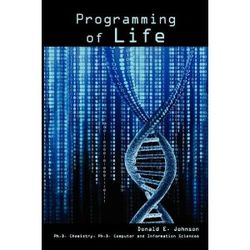Bloggfærslur mánaðarins, október 2010
14.10.2010 | 14:59
Lexía - hvers virði ert þú?
 Næsta hvíldardag ( 16. október ) á ég að sjá um lexíuna í Aðvent kirkjunni á Ingólfsstræti 19. Allir auðvitað velkomnir en lexían byrjar klukkan ellefu.
Næsta hvíldardag ( 16. október ) á ég að sjá um lexíuna í Aðvent kirkjunni á Ingólfsstræti 19. Allir auðvitað velkomnir en lexían byrjar klukkan ellefu.
Mig langar að fjalla aðeins um þessa lexíu, bæði er þetta forvitnilegt umræðuefni og síðan gott að gera þetta til að hjálpa mér að undirbúa mig.
Þessi lexía fjallar um Hönnu, móðir Samúels spámanns. Við lesum um sögu hennar í 1. Samúelsbók 1-2 kafla. Þar lesum við hvernig Hanna er óhamingjusöm og örvæntir vegna þess að hún hafði ekki eignast nein börn. Lexían veltir fyrir sér því vandamáli sem margir glíma við sem er hvort þeir séu einhvers virði því það virðist vera sem svo að Hanna upplifði að hennar líf væri einskis virði vegna þess að hún átti engin börn.
Samfélagið á hennar tímum virðist hafa ýtt þessari hugmynd að henni og hún byrjað að trúa þessu og varð óhamingjusöm út frá því. Í dag er þetta öðru vísi; ég að minnsta kosti hef ekki tekið eftir því að konur sem eru barnlausar upplifi það svona.
En hvaðan fær fólk þessa tilfinningu að það sé einhvers virði og hvað geta þeir gert sem upplifa að þeir eru einskis virði? Getur maður gert eitthvað fyrir fólk sem finnst það vera lítils virði?
Hérna getur boðskapur Biblíunnar verið mörgum grundvöllur þeirrar niðurstöðu að það sé mikils virði. Í ljósi sköpunarinnar og krossins þá getur það séð að Guði þykir vænt um það og það sé mikils virði í Hans augum.
En eitthvað virðist það hafa farið fram hjá Hönnu í sögunni. Hún er greinilega mjög trúuð en samt syrgir hún svona. Kannski vegna þess að hún trúði því að fyrst að hún gæti ekki eignast börn að þá væri Guð ekki með henni eða einhvers konar bölvun hvíldi á henni. Ég býst við því að ef fólk er einmanna og fátækt að þá er auðvelt að finnast vera lítils virði og að Guð hafi yfirgefið mann.
Saga Hönnu endar á því að æðsti presturinn sagði að Guð myndi bænheyra hana og það rættist. Hún eignaðist son. En í bæninni sem hún bað þá lofaði hún að gefa Guði soninn. Það er það sem myndin er af hérna fyrir ofan, þegar Hann kemur með son sinn Samúel og gefur hann í umsjó æðsta prestsins. Samúel verður síðan einn af aðal spámönnum Biblíunnar og spilar stórt hlutverk í sögu Ísraels.
Hérna er öll lexían á ensku: http://www.ssnet.org/qrtrly/eng/10d/less03.html
Hérna fer Doug Bachelor yfir lexíuna og það er mjög fróðlegt að heyra hans sýn á þessi mál, sjá: http://www.amazingfacts.org/Television/CentralStudyHour/tabid/76/Default.aspx - titill lexíunnar er "Hanna: learning to be someone".
Fyrri Samúelsbók 2
1 Hanna gjörði bæn sína og mælti: Hjarta mitt fagnar í Drottni, horn mitt er hátt upp hafið fyrir fulltingi Guðs míns. Munnur minn er upp lokinn gegn óvinum mínum, því að ég gleðst yfir þinni hjálp.
2 Enginn er heilagur sem Drottinn, því að enginn er til nema þú, ekkert bjarg er til sem vor Guð.
12.10.2010 | 11:06
Frjáls vilji og kenningin um helvíti
Ég rakst á áhugavert myndband hjá bloggaranum Hjalta þar sem fjallað er um frjálsa vilja og hvernig kenningin um helvíti gerir að engu hugmyndina um að Guð hafi gefið okkur frjálsan vilja. Ef það er eitthvað sem hata meira en þróunarkenninguna þá er það kenningin um helvíti; þeir sem kalla sig kristna verða að henda henni á haugana hið bráðasta. Ef þú síðan tilheyrir kirkju sem kennir þetta en ert ósammála þá áttu auðvitað að yfirgefa þá kirkju. Kristnir eiga að sameinast í kirkju sem er sem næst því sem Biblían boðar en ekki velja kirkju eftir því sem hentar, af því að hún er nálægt eða vinir manns tilheyra henni.
Trúmál og siðferði | Breytt s.d. kl. 11:23 | Slóð | Facebook | Athugasemdir (41)
11.10.2010 | 13:39
MIQ - Aðventista vefur fyrir unglinga
 MIQ eða "Most important questions". Þetta er nýr aðventista vefur sem reynir að glíma við stóru spurningarnar sem flestir unglingar spyrja sig. Spurningar eins og "Hvaðan kom ég", "Hvað verður um mig" og "hver er tilgangur lífs míns" og fleira.
MIQ eða "Most important questions". Þetta er nýr aðventista vefur sem reynir að glíma við stóru spurningarnar sem flestir unglingar spyrja sig. Spurningar eins og "Hvaðan kom ég", "Hvað verður um mig" og "hver er tilgangur lífs míns" og fleira.
Hérna er fjallað um mitt uppáhalds umræðuefni, sköpun þróun, sjá: Where did I come from?
Trúmál | Breytt s.d. kl. 13:58 | Slóð | Facebook | Athugasemdir (0)
8.10.2010 | 11:38
Forritun lífs - DNA og tölvur
 Stundum þegar ég hef líkt DNA og frumunni við tölvur sem keyra forrit þá hafa sumir mótmælt. Þeim finnst þessi samanburður villandi en ég er á því að þetta er réttur samanburður því að samskonar vélar og framkvæmd er um að ræða.
Stundum þegar ég hef líkt DNA og frumunni við tölvur sem keyra forrit þá hafa sumir mótmælt. Þeim finnst þessi samanburður villandi en ég er á því að þetta er réttur samanburður því að samskonar vélar og framkvæmd er um að ræða.
Nú er komin út bók sem fjallar um þennan samanburð sem kallast PROGRAMMING OF LIFE
Ég hef ekki enn lesið hana en ég þarf að ná mér í eintak.
Hérna er lýsing bókarinnar frá Amazon:
“This is currently the best book covering the relationship between genome and computer architectures.” – JOHNATHAN BARTLETT, Author / Publisher / Speaker / Director of Technology —– This book highlights the informational aspects of life that are generally overlooked or ignored in chemical and biological evolutionary scenarios. Each cell of an organism has millions of interacting computers reading and processing digital information, using digital programs and digital codes to communicate and translate information. Life is an intersection of physical science and information science. Both domains are critical for any life to exist, and each must be investigated using that domain’s principles. Yet most scientists have been attempting to use physical science to explain life’s information domain, a practice which has no scientific justification. — As you can tell by the preceding words this research is a fascinating approach to the question of the origin of life. – (PUBLISHER) —– “Programming of Life is an excellent freshman level review of the formal programming, coding/decoding, integration, organization, Prescriptive Information (PI), memory, regulation and control required for a physical object to find itself ‘alive.’ DONALD E. JOHNSON is uniquely qualified to unpackage the strong parallels between everyday cybernetic design and engineering and the workings of the cell. I highly recommend this book.” -DAVID L. ABEL, Director, The Gene Emergence Project Department of ProtoBioCybernetics and ProtoBioSemiotics The Origin of Life Science Foundation, Inc. —– (ABOUT THE AUTHOR:) DR. DON JOHNSON has earned Ph.D.s in both Computer & Information Sciences from the University of Minnesota and in Chemistry from Michigan State University. He was a senior research scientist for 10 years in pharmaceutical and medical / scientific instrument fields, served as president and technical expert in an independent computer consulting firm for many years, and taught for 20 years in universities in Wisconsin, Minnesota, California, and Europe. He now maintains scienceintegrity.net to expose unsubstantiated claims in science and has made presentations on most continents.
Hægt er að kaupa bókina hérna:
Vísindi og fræði | Breytt s.d. kl. 12:50 | Slóð | Facebook | Athugasemdir (2)
4.10.2010 | 13:21
Gunnar vs Stephen Hawking
Nei, ekki Gunnar í Krossinum á móti Stephen Hawking. Ég hreinlega veit ekki hvaða Gunnar þetta er en ég vona að hann hafi ekki á móti því að ég veki athygli á þessu. Málið er að vinur minn benti mér á spurningu frá einhverjum Gunnari frá Íslandi til William Lane's Craig sem er vel þekktur kristinn fræðimaður. Hérna spyr Gunnar góðra spurninga varðandi nýju bók Stephen Hawkings og svar Craigs er mjög fróðlegt. Er samt ósammála Gunnari þegar hann segir að Hawking er einn af merkilegustu vísindamönnum sögunnar, ég myndi frekar segja að hann er með merkilegri vísindamönnum samtímans.
Hérna er þetta, tekið héðan af http://www.reasonablefaith.org
Hello Mr. Craig.
I am sure you saw the excerpts from Stephen Hawking's soon to be published book "The Grand Design". There he claims that because of the law of gravity "the universe can and will create itself from nothing". So, according to Hawking, there is no need to refer to God since "spontaneous creation is the reason there is something rather than nothing, why the universe exists, why we exist."
Now I am no physicist, and I can understand that an auther sometimes needs to go to some length in order to publicize and marketing his book so as to ensure a good sale, but to me this seems to be simply an irrational leap, to say the least.
Although all we have here are a few statements from a book lenght argument, nevertheless all sorts of questions come to mind.
Of course Hawking does not believe that the universe really came from nothing since gravity was there to do the creating. And certainly gravity is not nothing. But what is gravity apart from the universe (i.e. space and mass)? Are the laws of nature not properties of the universe? Are they not part of it? Did they not come into being with the universe? Where did gravity come from?
How is it possible to strech science outside the universe, i.e. the setting of scientific inquiry. How can the scientist jump behind the Big Bang? How can he infer anything scientifically about what came before the Big Bang? In doing so, it seems to me, one has entered into the realm of metaphysics.
And then, of course, there is the absurdity of the self-contradictory notion a la Dennet that the universe (or anything at all) could create it self from nothing.
It seems to me that Hawking simply replaces one transcending cause (God) for another (gravity).
It goes without saying that Stepehn Hawking is one of the greatest scientist in history. Nevertheless I am truly astonished.
Could you give me your perspective on this?
Respectfully,
Gunnar
IcelandDr. Craig responds:
We have been inundated with questions about the sensational claims touted in the press in advance of the release of Hawking and Mlodinow’s new book The Grand Design. I chose your question, Gunnar, not merely because it was representative of so many but because I couldn’t resist posting a question from Iceland!
In my blog of September 6, in advance of the book’s release, I posed several questions that we need to keep in mind when we come to the book. Those questions proved to be right on the money. Not only is there nothing of scientific substance new in this book, nothing that Hawking had not already stated in his earlier best-seller A Brief History of Time, but Hawking and Mlodinow also fail to take any cognizance of criticisms in the literature of Hawking’s earlier proposals. If you have digested my treatment of the origin and fine-tuning of the universe in Reasonable Faith, 3rd ed., then you are already equipped to respond to the claims of this new book.
Hawking and Mlodinow seek to answer three questions in this book:
1. Why is there something rather than nothing?
2. Why do we exist?
3. Why this particular set of laws and not some other?
Curiously, their answer to each of these questions turns out to be very brief. In fact, (2) gets folded into (1) and so doesn’t even receive a separate answer.
Hawking and Mlodinow’s answer to questions (1) and (2) is an appeal to the “no boundary” model of the origin of the universe, popularized by Hawking in A Brief History of Time. Our authors simply expound the model without adducing any evidence for it or mentioning any of the alternative models to it. Nor do they respond to the criticism that the so-called “imaginary time” featured in the model is physically unintelligible and therefore merely a mathematical “trick” useful for avoiding the cosmological singularity which appears in classical theories at the beginning of the universe.
Still, their exposition is not without interest with regard to whether the universe had a temporal beginning. They write,
The realization that time can behave like another direction of space means one can get rid of the problem of time having a beginning, in a similar way in which we got rid of the edge of the world. Suppose the beginning of the universe was like the South Pole of the earth, with degrees of latitude playing the role of time. As one moves north, the circles of constant latitude, representing the size of the universe, would expand. The universe would start as a point at the South Pole, but the South Pole is much like any other point. To ask what happened before the beginning of the universe would become a meaningless question, because there is nothing south of the South Pole. In this picture space-time has no boundary—the same laws of nature hold at the South Pole as in other places (pp. 134-5).
This passage is fascinating because it represents a rather different interpretation of imaginary time than what we had in A Brief History of Time. Here the analogy of the South Pole is interpreted to imply a beginning point to both time and the universe. Despite the fact that imaginary time behaves like another spatial dimension, Hawking allows the circles of latitude to play the role of time, which has a beginning point at the South Pole. When Hawking speaks of “the problem of time having a beginning,” what he means is “the age-old objection to the universe having a beginning” (p. 135), an objection which his model removes. That age-old objection is the question, “What happened before the beginning of the universe?” Hawking is right that this question is meaningless on his model; but what he fails to mention is that the question is equally meaningless on the standard big bang model, since there is nothing prior to the initial cosmological singularity. On either model the universe has an absolute temporal beginning—just as the second premiss of the kalam cosmological argument states.
So the question is, why did the universe begin to exist? Why is there something rather than nothing? Hawking and Mlodinow advocate what they call a “top down” approach to this question. The idea here is to begin with our presently observed universe characterized by the standard model of particle physics and then calculate, given the no boundary condition, the probability of the various histories allowed by quantum physics to reach our present state. The most probable history represents the history of our observable universe. Hawking and Mlodinow claim that “in this view, the universe appeared spontaneously from nothing” (p. 136). By “spontaneously” they seem to mean without a cause.
But how does that follow from the model? The top down approach calculates the probability of our observable universe given the no boundary condition. The top down approach doesn’t calculate the probability that the no boundary condition should hold but takes it for granted. Such a condition is not metaphysically or physically necessary. If the universe came into being uncaused from nothing, it could have had any sort of conceivable spatiotemporal configuration. For nothingness, or non-being, has no properties or constraints and is governed by no physical laws. Physics only begins at the “South Pole” in the no boundary model. There isn’t anything in the model that implies that that point came to be without a cause. Indeed, the idea that being could arise without a cause from non-being seems metaphysically absurd.
Hawking and Mlodinow seem to realize that they have not yet answered the question, “Why is there something rather than nothing?,” for they return to this question in their concluding chapter and give a quite different answer. There they explain that there is a constant vacuum energy contained in empty space, and if the universe’s positive energy associated with matter is evenly balanced by the negative energy associated with gravitation, then the universe can spontaneously come into being as a fluctuation of the energy in the vacuum (which, by a clever sleight of hand, they say “we may as well call . . . zero”). This seems to be a very different account of the universe’s origin, for it presupposes the reality of space and the energy in it. So it’s puzzling when Mlodinow and Hawking conclude, “Because there is a law like gravity, the universe can and will create itself from nothing in the manner described in Chapter 6” (p. 180). Here it is said that the nothingness spoken of in Chapter 6 is not really nothingness after all but is space filled with vacuum energy! That goes to reinforce the conviction that the no boundary approach only describes the evolution of our universe from its origin at its “South Pole” to its present state but is silent as to why the universe came to exist in the first place.
What this implies is that Hawking and Mlodinow have not even begun to address the philosophical question, “Why is there something rather than nothing?” For “nothing” in their vocabulary does not have the traditional meaning “non-being” but rather means “the quantum vacuum.” They aren’t even answering the same question. Like the philosophy student who, put the question, “What is Time?” on his final exam, answered, “a weekly news magazine,” so Hawking and Mlodinow have avoided the tough question by equivocation.
If they have thus failed to answer questions (1) and (2), what about (3): Why is there this particular set of laws rather than some other? The issue here is explaining the apparently miraculous fine-tuning of the universe for intelligent life. Hawking and Mlodinow express this idea by observing that “in recent years physicists began asking themselves what the universe would have been like if the laws of nature were different” (p. 159).
Unfortunately, this statement is very misleading. Scientists grappling with fine-tuning are not asking what the universe would have been like if it were governed by different laws of nature. Rather they’re asking what the universe would have been like if it were governed by same laws of nature but with different values for the physical constants appearing in them and with different quantities for the initial conditions on which the laws operate. Nobody knows what a universe governed by different laws would be like! But because we’re talking about universes governed by the same laws, but with different numbers plugged in for the constants and quantities, we can calculate what kind of universe the laws would predict (just as Hawking and Mlodinow illustrate on pp. 159-62). So question (3) is malformed as stated. The real question is: why this particular set of constants and quantities rather than some other?
Now there are three possible answers to that question: physical necessity, chance, or design. Hawking and Mlodinow reject the hypothesis of physical necessity: “It appears that the fundamental numbers, and even the form, of the apparent laws of nature are not demanded by logic or physical principle” (p. 143). Since Mlodinow and Hawking want nothing to do with a Cosmic Designer, they opt for the hypothesis of chance. Since the odds of our universe’s being fine-tuned for intelligent life are so incomprehensibly remote, Hawking and Mlodinow appeal to the Many Worlds Hypothesis to augment one’s probabilistic resources to the extent that it becomes inevitable that a finely tuned universe will appear by chance somewhere in the World Ensemble or multiverse. If there are an infinite number of randomly ordered universes in the Ensemble, then a finely tuned universe will appear somewhere in the Ensemble by chance alone.
Now if the Many Worlds Hypothesis is to be serious science rather than metaphysical speculation, some sort of mechanism needs to be provided to generate the World Ensemble. The mechanism to which Hawking and Mlodinow appeal is Richard Feynman’s “sum-over-histories” approach to quantum theory. This is the approach which Hawking uses in the no boundary model to calculate the most probable history of the universe, given the no boundary condition, to our present observed state. Hawking and Mlodinow take these alternative histories which the universe might have pursued to be actual, parallel universes which are just as real as our universe.
Unfortunately, this is not science but a gratuitous piece of metaphysics. Feynman’s sum-over-histories method is just a mathematical tool for calculating the probability of a subatomic particle’s arriving at one point from another. One imagines all the possible paths the particle could have taken and then on that basis calculates the probability of its reaching the observed destination. There’s no basis for interpreting this mathematical “trick” to imply the ontological reality of concrete, spatio-temporal universes.
Hawking and Mlodinow also appeal to M-Theory or superstring theory to generate the World Ensemble of universes exhibiting various values for the constants of nature. Such a speculation is problematic in a number of ways which they do not discuss. First, the “cosmic landscape” of 10500 different possible universes consistent with nature’s laws which M-Theory allows are just that: possibilities. They are not real worlds, anymore than are Feynman’s histories. Second, it’s not clear that 10500 possibilities are sufficient to guarantee the existence of finely tuned universes in the landscape. What if the probability of fine tuning is less than 1:10500? This may be especially problematic concerning the arbitrary initial conditions. Finally, does the multiverse itself described by M-Theory exhibit fine-tuning? If it does, then the problem has only been pushed back a notch. It seems that it does, for as Hawking and Mlodinow note, M-Theory requires precisely eleven dimensions if it is to be viable, and yet the theory cannot account for why just that number of dimensions should exist.
Moreover, Mlodinow and Hawking do not even mention, much less respond to, Roger Penrose’s trenchant criticism of the Many Worlds Hypothesis for explaining fine-tuning in his The Road to Reality, namely, that if we were just a random member of a World Ensemble, then it is incomprehensibly more probable that we should be observing a much different universe than what we do, which strongly disconfirms the Many Worlds Hypothesis. There’s no excuse for Hawking’s failure to respond to his erstwhile collaborator’s criticisms of Hawking’s view.
In summary, despite Hawking and Mlodinow’s vaunted assertions and constant sniping at religious belief throughout this book, there is actually genuine profit in it for religious believers, especially for those interested in natural theology. With respect to the kalam cosmological argument, the authors’ preferred theory affirms the fact of an absolute beginning of time and the universe, which is the key premiss of the argument. With respect to the teleological argument based on fine-tuning, the authors affirm the fact of the apparently miraculous fine tuning of the universe for intelligent life. Moreover, they agree that the fine-tuning cannot be plausibly explained as due to physical necessity or by chance in the absence of a World Ensemble. Given the desperation and/or irrelevancy of their proffered ways to escape these arguments, their book turns out to be quite supportive of the existence of a transcendent Creator and Designer of the cosmos.
2.10.2010 | 19:43
McGrath og Penrose um M-kenningu Stephen Hawking’s
Hérna er smá útdráttur úr viðtali við Roger Penrose og Alister McGrath um nýju bók Stephen Hawkings. Aðalega fjalla þeir um hans hugmynd að alheimurinn geti orðið til af sjálfu sér vegna þyngdaraflsins og m-theory. Penrose gengur svo langt að kalla m-theory ekki kenningu og ég er sammála honum. Hann segir þetta vera samansafn af hugmyndum og ég held að þar hitti hann naglann á höfuðið.
Hérna er allur þátturinn: http://www.premierradio.org.uk/listen/ondemand.aspx?mediaid={320D8898-A8F0-4433-8934-D64DDEB8A21C}
Um bloggið
Mofa blogg
Færsluflokkar
- Bloggar
- Bækur
- Dægurmál
- Ferðalög
- Fjármál
- Fjölmiðlar
- Heilbrigðismál
- Heimspeki
- Íþróttir
- Kjaramál
- Kvikmyndir
- Lífstíll
- Ljóð
- Löggæsla
- Mannréttindi
- Matur og drykkur
- Menning og listir
- Menntun og skóli
- Samgöngur
- Sjónvarp
- Spaugilegt
- Spil og leikir
- Stjórnmál og samfélag
- Sveitarstjórnarkosningar
- Tónlist
- Trúmál
- Trúmál og siðferði
- Tölvur og tækni
- Umhverfismál
- Utanríkismál/alþjóðamál
- Vefurinn
- Viðskipti og fjármál
- Vinir og fjölskylda
- Vísindi og fræði
Tenglar
Kristnar síður
Ýmislegt
Sköpun/þróun
Síður sem fjalla um sköpun/þróun
- Detecting Design
- UnCommon descent Blogg síða William Dembski um vitræna hönnun
- Creation-Evolution Headlines Síða sem fjallar um fréttir tengdar sköpun þróun
- EvolutionNews Síða sem fjallar um fréttir sem tengjast Vitsmunahönnun
Bloggvinir
- Bergur Thorberg
- Birgirsm
- Brosveitan - Pétur Reynisson
- Bryndís Böðvarsdóttir
- Daníel Þór Þorgrímsson
- Davíð S. Sigurðsson
- Davíð Örn Sveinbjörnsson
- Daði Einarsson
- Dóra litla
- Eva
- Eygló Hjaltalín
- Friðrik Páll Friðriksson
- Georg P Sveinbjörnsson
- Gladius
- Gunnar Ingi Gunnarsson
- Gunnlaugur Halldór Halldórsson
- Guðni Már Henningsson
- Guðrún Sæmundsdóttir
- Guðsteinn Haukur Barkarson
- Gísli Kristjánsson
- Halldóra Hjaltadóttir
- Halldóra Lára Ásgeirsdóttir
- Hjalti Rúnar Ómarsson
- Hörður Finnbogason
- Hörður Halldórsson
- Inga Helgadóttir
- Ingibjörg
- Ingvar Leví Gunnarsson
- Ingvar Valgeirsson
- Janus Hafsteinn Engilbertsson
- Jens Sigurjónsson
- Jóhann Hauksson
- Jóhann Helgason
- Jóhannes Ólafsson Eyfeld
- Jón Hjörleifur Stefánsson
- Jón Ríkharðsson
- Jón Valur Jensson
- Jónatan Gíslason
- Júdas
- Kristin stjórnmálasamtök
- Kristinn Theódórsson
- Kristinn Theódórsson
- Kristinn Ásgrímsson
- Linda
- Mama G
- Morgunstjarnan
- Nonni
- Omnivore
- Predikarinn - Cacoethes scribendi
- Pétur Eyþórsson
- Ragnar Birkir Bjarkarson
- Ragnar Kristján Gestsson
- Ragnar Steinn Ólafsson
- Ragnheiður Katla Laufdal
- Róbert Badí Baldursson
- Rósa Aðalsteinsdóttir
- Rödd í óbyggð, kristilegt félag
- Röddin
- Rúnar Kristjánsson
- Sigurður Þórðarson
- Sigvarður Hans Ísleifsson
- Steinar Immanúel Sörensson
- Styrmir Reynisson
- Svanur Gísli Þorkelsson
- Sverrir Halldórsson
- TARA
- TARA ÓLA/GUÐMUNDSD.
- Theódór Norðkvist
- Tryggvi Hjaltason
- Tímanna Tákn
- Unknown
- Vefritid
- Viðar Freyr Guðmundsson
- gudni.is
- Ólafur Jóhannsson
- Þarfagreinir
- Þórdís Ragnheiður Malmquist
- Alexander Steinarsson Söebech
- Árni Karl Ellertsson
- BookIceland
- Elísa Elíasdóttir
- Fanney Amelía Guðjonsson
- Friðrik Már
- Gestur Halldórsson
- Guðjón E. Hreinberg
- Gunnar Ingvi Hrólfsson
- Gunnar Jóhannesson
- Hulda Þórey Garðarsdóttir
- Jens Guð
- Karl Jóhann Guðnason
- Kristinn Ingi Jónsson
- Lífsréttur
- Mathieu Grettir Skúlason
- Tómas Ibsen Halldórsson
- Valur Arnarson
- Viktor
- Vilhjálmur Örn Vilhjálmsson
Heimsóknir
Flettingar
- Í dag (19.9.): 0
- Sl. sólarhring: 1
- Sl. viku: 7
- Frá upphafi: 0
Annað
- Innlit í dag: 0
- Innlit sl. viku: 7
- Gestir í dag: 0
- IP-tölur í dag: 0
Uppfært á 3 mín. fresti.
Skýringar






